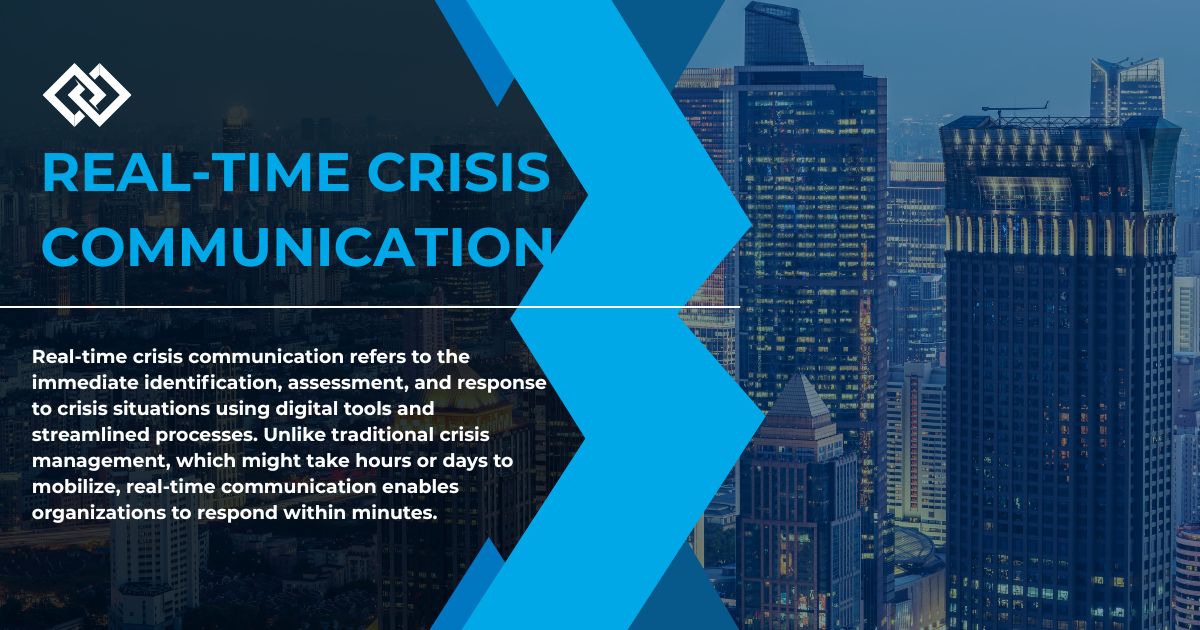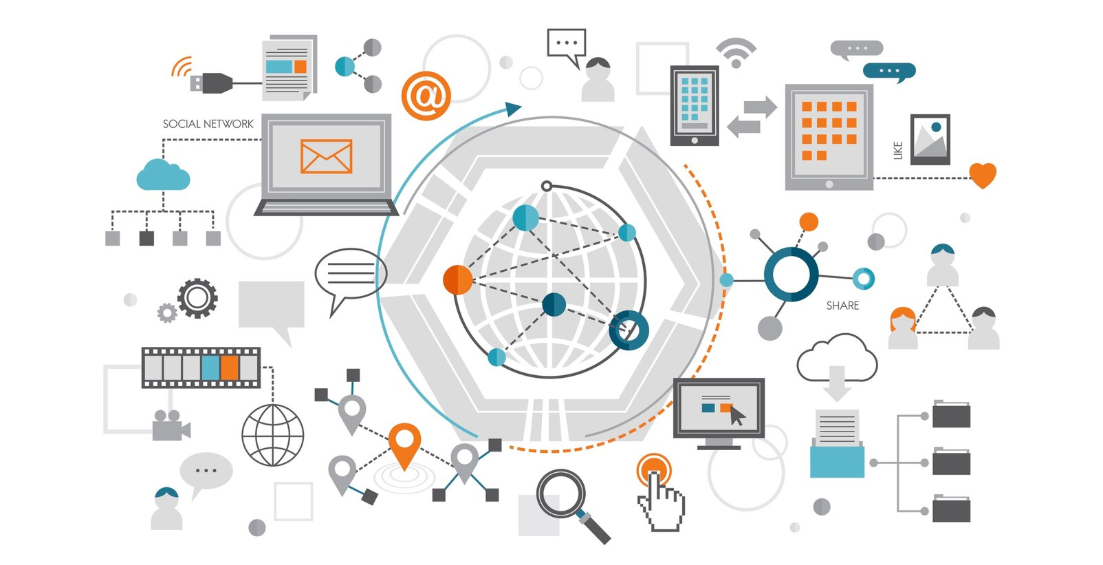
The crisis attacks without warning. A data -breech postpone the customer’s information. A product misses security issues. A social media post lights public setbacks. When these moments are affected, the speed of your answer may determine if your brand is strong or face permanent damage.
Real -time Crisis Communication has become the cornerstone of modern reputation management. This is the practice of monitoring, responding and handling the conditions in the crisis when they come out, often within minutes or hours after the occurrence. This approach converts crisis management to a strategic profit from a reactive quarrel.
This guide examined the basic things of real -time crisis communication, its most important components and organizations that protect their reputation, when it matters most.
Understanding Real-Time Crisis Communication
Real-time crisis communication refers to the immediate identification, assessment, and response to crisis situations using digital tools and streamlined processes. Unlike traditional crisis management, which might take hours or days to mobilize, real-time communication enables organizations to respond within minutes.
The approach encompasses several critical elements:
Speed of Response: Teams monitor multiple channels simultaneously and can detect emerging issues before they escalate into full-blown crises. This early detection creates opportunities for damage control that simply didn’t exist in pre-digital communication.
Multi-Channel Coordination: Real-time crisis communication requires coordinated messaging across social media, traditional media, internal communications, and direct customer outreach. Each channel demands tailored messaging while maintaining consistency.
Stakeholder Engagement: Modern crises unfold in public forums where customers, employees, investors, and media all participate simultaneously. Real-time communication acknowledges this reality by engaging directly with affected parties rather than relying solely on official statements.
Know about How to manage viral negative campaigns
Core Components of Real-Time Crisis Communication
Monitoring and Detection Systems
Effective crisis communication in real time begins with strong surveillance systems. These systems at the same time track mention, feelings and new problems on several platforms.
Social media surveillance tools scanning platforms such as Twitter, Facebook, LinkedIn and Instagram to name a brand, products or key personnel. Advanced systems use artificial intelligence to detect abnormal spikes in mentioning or changing emotions that may indicate new problems.
News monitoring services track traditional media, blogs and online publications. These devices help to identify when stories track and what journalists cover development conditions.
Employee reporting systems create internal channels for employees to report potential problems. Often, grassroots employees are aware of the problems before public attention.
Response Team Structure
Real-time crisis communication requires a dedicated team with clearly defined roles and decision-making authority. This team should include:
Crisis Communication Manager: The central coordinator who oversees all communication efforts and ensures consistency across channels.
Social Media Specialists: Team members who craft platform-specific responses and engage directly with concerned stakeholders online.
Legal and Compliance Representatives: Advisors who ensure all communications comply with regulatory requirements and don’t create additional legal exposure.
Executive Decision-Makers: Senior leaders empowered to make quick decisions about response strategies and resource allocation.
Subject Matter Experts: Individuals with deep knowledge of the specific issue at hand, whether technical, operational, or industry-specific.
Communication Protocols
Successful real-time crisis communication relies on pre-established protocols that guide decision-making under pressure. These protocols should address:
Escalation Procedures: Clear guidelines for when situations require immediate executive attention versus when they can be handled by front-line communication staff.
Message Approval Processes: Streamlined systems for reviewing and approving communications that balance speed with accuracy and legal compliance.
Channel Prioritization: Predetermined strategies for which communication channels to use first based on the nature and audience of the crisis.
Documentation Requirements: Standards for recording decisions, communications, and outcomes to support post-crisis analysis and potential legal requirements.
The Digital Transformation of Crisis Communication

Digital platforms have fundamentally changed how the crisis develops and spreads. Social media can increase negative events within minutes and make isolated events into global interaction.
This change creates both challenges and opportunities for organizations. The challenge lies at the pace of negative information, and after gaining speed online, it is difficult to control stories.
However, digital platforms also provide unique opportunities for direct commitment. Organizations can directly respond to the affected customers, share real -time updates and show openness in ways that were not possible with traditional media alone.
The key is to understand that the digital crisis is communication goods instead of broadcast centers. Success comes from authentic confusing with stakeholders instead of promoting official statements.
Building Your Real-Time Crisis Communication System
Technology Infrastructure
Effective real-time crisis communication depends on reliable technology infrastructure. This includes:
Communication Platforms: Systems that enable instant messaging, video conferencing, and file sharing among team members, regardless of their location.
Monitoring Tools: Comprehensive platforms that track mentions, sentiment, and emerging issues across multiple channels simultaneously.
Content Management Systems: Tools that allow rapid creation, approval, and distribution of communications across multiple channels.
Mobile Capabilities: Ensuring all team members can access critical systems and communicate effectively from mobile devices.
Training and Preparedness
Technology alone cannot ensure effective crisis communication. Teams need regular training and practice to perform effectively under pressure.
Simulation Exercises: Regular drills that test both systems and team responses to various crisis scenarios. These exercises should include realistic time pressure and decision-making challenges.
Role-Playing Activities: Training sessions where team members practice handling difficult conversations and hostile interactions in a controlled environment.
Platform Familiarity: Ensuring all team members understand how to use monitoring tools, communication platforms, and content management systems effectively.
Message Crafting Skills: Training in writing clear, empathetic, and legally compliant communications under time pressure.
Learn When Bad Content Goes Viral
Stakeholder Mapping
Understanding your key stakeholders and their communication preferences is crucial for effective real-time crisis communication. Different groups require different approaches:
Customers: Often prefer direct, honest communication through social media or email. They want to know how the crisis affects them personally and what actions they should take.
Employees: Need clear, frequent updates about how the crisis impacts their work and what support the organization is providing.
Investors: Require formal communications that address financial implications and management’s response plans.
Media: Expect timely, accurate information and access to appropriate spokespeople who can provide context and answer questions.
Regulators: May require specific reporting formats and timelines based on industry requirements and legal obligations.
Common Challenges and Solutions
Information Overload
Real-time monitoring can generate overwhelming amounts of data. The key is developing systems that filter signal from noise and prioritize the most critical issues.
Establish clear criteria for what constitutes a crisis versus routine negative feedback. Train team members to recognize patterns that indicate escalating situations versus isolated complaints.
Maintaining Accuracy Under Pressure
The pressure to respond quickly can lead to inaccurate or incomplete communications. Develop fact-checking protocols that can be executed rapidly without compromising response speed.
Create pre-approved message templates for common scenarios. This allows teams to respond quickly with accurate information while customizing details for specific situations.
Coordinating Multiple Voices
Large organizations often have multiple departments and spokespeople who might communicate about crisis situations. Lack of coordination can lead to contradictory messages that undermine credibility.
Establish clear protocols for who can speak publicly during crises and ensure all communications are coordinated through the central crisis communication team.
Managing Emotional Responses

Crises often generate strong emotional responses from stakeholders. Teams need strategies for acknowledging these emotions while maintaining professional, helpful communication.
Train team members in empathetic communication techniques. Acknowledge concerns and emotions while providing clear, helpful information about next steps.
The Future of Real-Time Crisis Communication
Real-time crisis communication evolving as technology advances and communication expectations change. Several trends are shaping the future of this field:
Artificial Intelligence Integration: AI tools are becoming more sophisticated at detecting emerging issues, predicting crisis development, and even generating initial response communications.
Video Communication: Live video streaming and video responses are becoming more common as organizations seek to add authenticity and transparency to their crisis communications.
Personalization at Scale: Advanced systems are enabling organizations to provide personalized communications to different stakeholder groups while maintaining consistency in core messaging.
Predictive Analytics: Organizations are using data analysis to identify potential crisis situations before they fully develop, enabling even more proactive communication strategies.
Building Resilience Through Communication
Crisis emotional intelligence in real-time represents more than loss control only-this is an opportunity to create stakeholders trust and organizational flexibility. Organizations that effectively communicate under crises often emerge with strong conditions and increased reputation.
The key crisis is to look at communication as an ongoing ability rather than emergency preparedness. This means investing in systems, training and conditions before the crisis.
Begin by assessing your current crisis communication skills. Identify intervals in monitoring, reaction processes or team training. Build a surveillance system that provides initial warnings of potential problems. Train team trains too quickly and sympathetically to respond to stakeholders’ concerns.
The most important thing is that you practice these skills regularly through simulation and practice. Like any other business capacity, the crisis with communication experience and preparation is improved.
When the next crisis becomes a hit and it will determine your investment in real-time crisis communication whether it becomes a decisive moment of strength or a source of permanent loss to the organization’s reputation.


















No Comments